Watt EV Coupe – Will It Make It to Production or Not?
The Watt Electric Vehicle Company (WEVC) has unveiled the EV Coupe, a classic shape inspired by the 1955 Porsche 356A. WEVC is not connected with Porsche AG. WEVC does not imply that any of their products are a product of Porsche AG, nor are the Porsche or 356 names used or associated with WEVC products. So why would we think WEVC is on a slippery slope?
Curbside Classic Special: 1959 Edsel "Eco-Boost"
Editor’s note: Ladies and gentlemen, for one night only, it’s the return of Curbside Classics to TTAC. You can catch Paul Niedermeyer’s work (along with contributions from an ever expanding crew of TTAC commenters and more) on a regular basis at the new Curbside Classics site. But this piece? It just had to be on TTAC.
There’s a big difference between creating and re-creating. The proto-hot rodders of yore scoured the junk yards for new solutions, not to replicate. The competition was as much in creativity as it was pure speed. Much of that has given way to endless replication, whether it’s a perfect restoration or a 1000 hp resto-mod. But creative juices are irrepressible, and they were certainly at work here. Want a daily driver Edsel, but not its 1950′s fuel-gulping ways? The solution was just a $200 junkyard engine away. But it had to be imagined first. Now that’s creativity, and a harbinger of the future. Which is exactly what the old car hobby needs: a new model, like this “Eco-Boost” Edsel.
Curbside Classic: 1975 Chevrolet Monte Carlo
You’d think that all the Malaise Era Montes would have been crushed 15 years ago, but you still see the occasional survivor chugging around these days. I spotted this battered-but-solid example in a Denver park a few months back.
Snorkel-ized, RHD Diesel Land Cruiser Laughs At Denver Winter
In my first Denver winter after a driving lifetime in coastal California, I’m now experiencing my first real taste of driving in snow. My ’92 Civic is doing pretty well (i.e., I haven’t crashed or become stuck yet), but I’m starting to eyeball Craigslist listings for IHC Scouts and FJ40 Land Cruisers. After spotting this Toyota in my neighborhood, I may have to forget about the Scouts.
Cargo Capacity Slightly Diminished, But Totally Worth It!
Here’s a totally practical daily driver I spotted on the south side of Denver a while back.
Shorty Shoebox-amino Astounds, Confounds
Not many of us wake up in the morning and say to ourselves, “I think I’m going to shorten and narrow a ’57 Chevy wagon, give it a truck bed, and install a 427 with a 5-speed!”
1975 BMW 2002tii
Yes, owners of classic cars still drive them on the street during the winter in Denver (though we haven’t seen any real snow yet); I spotted this rare Bavarian at the park yesterday.
Curbside Classic: 1980 Chevrolet Citation – GM's Deadliest Sin Ever
The greatest crime in ancient Greece was hubris. And the perpetrator that carried out the sins as a result of their hubris inevitably faced great shame and retribution, most often fatal. So for the sake of this CC, we’re going to drop the Citation’s X-Car moniker, and call them the H-Cars. And just in case you’re not convinced that the Citation truly was GM’s greatest sin rather than the Vega (coincidentally numbered GM’s DS #2), let me cite you the incontrovertible evidence:
Curbside Classics: The First Mini-Pickups: Datsun's 1964 320 1200; 1967 520 1300; 1969 521 1600
The Toyota pickup has become such a dominant vehicle in its class worldwide, its easy to assume that it was always that way. Not so. It was Nissan’s little Datsun trucks that essentially invented the modern mini-pickup genre, and was top puppy in the US for well over a decade before handing over the throne. In fact, trucks were the only vehicle that Datsun imported for quite a few years, and made its reputation with them. They’re a significant piece of automotive history, and many are still hard at work, at least hereabouts.
The Curbside Classics Treasure Hunt
This week’s Silversides Bus and Tempest CCs were high on my wish list, and finding them motivated me to put in some serious overtime. So today I need a breather, say an urban hike from our house to Skinner Butte, the geographic focal point of Eugene. Now some of you have asked if you could join me sometime on a CC hunt in Eugene; of course you all have a standing invitation; just show up. In the meantime you can join me on a virtual tour/hunt of the Skinner Butte District. I’ll just point out the highlights of the neighborhood, and you just give a shout out when you see something that interests you.
Curbside Classic: 1963 Tempest LeMans- Pontiac Tries To Build A BMW Before BMW Built Theirs And Almost Succeeds
In the thirties and forties, GM pioneered and brought to market some of the most innovative, successful and lasting new technologies: diesel-electric locomotives, the modern diesel bus, automatic transmissions, refrigeration and air conditioning systems, high compression engines, independent front suspension, and many more. But GM’s technology prowess was just one facet of its endlessly warring multiple personalities. Planned obsolescence, chrome, fins and financial rationalization were the real moneymakers, especially during the technically conservative fifties. But in the period from 1960 to 1966, GM built three production cars that tried to upend the traditional format: the rear engined 1960 Corvair, the front-wheel drive 1966 Toronado, and the 1961 Tempest. And although the Corvair and Toronado tend to get the bulk of the attention, the Tempest’s format was by far the most enduring one: it was a BMW before BMW built theirs. If only they had stuck with it.
Curbside Classic: 1947 GM PD-3751 "Silversides" Greyhound Bus – The First Modern Diesel Bus
This GM bus revolutionized the industry, and set the template for all over-the road buses to come: forward control, rear transverse diesel engine, the famous fluted aluminum “Silversides” cladding, semi-monocoque construction, high floor and underfloor luggage compartments. But its wildest feature was not replicated: a four-on-the-tree shifter and its mechanical linkage back to the non-synchronized gear box; something had to be left to improve. Let’s check it out and delve into the history and workings of its legendary Detroit Diesel 6-71 engine, which first made its appearance here.
Curbside Classic – When Honda's Mojo Was Working: 1980-1983 Honda Civic
Yesterday’s piece about Honda’s slippage left little doubt that its mojo ain’t quite what it used to be. But there was a time when Honda was on fire, and could do (almost) no wrong. The gen 1 Civic was like a little cherry bomb lobbed into a Weight-Watcher’s convention. Tiny, tinny, rude and crude as it was, the first Civic already embodied the unique qualities, if in somewhat embryonic form, that would revolutionize the American small car market and establish Honda’s meteoric rise. And this gen2 Civic was huge step forward; now instead of wearing a Civic like a badge of honor, one could now actually step into it and think of it as a legitimate car. How civil and civic-minded. But the best was yet to come.
Curbside Classic: 1946 Lincoln Continental – The Most Imitated American Car Ever
This car is a jaw-dropper, a true classic, and a lucky find that rivals the CC logomobile, but it’s misnamed. By all rights, it should be the Edsel American. It was Edsel Ford’s fine taste and encouragement that made the original version of this trend-setting car happen, and in the process created a car that set the template that every American personal luxury coupe/convertible has been trying to measure up to ever since. An aggressive face on a very long hood, a close-coupled body, a short rear deck, and dripping with the aura of exclusivity and sex: a timeless formula. All too few of the endless imitators got the ingredients right, or even close, as our recent Cougar CC so painfully showed. But that didn’t stopped them from trying, just like I never stopped looking for this Continental after I first saw it almost two years ago. It was well worth the effort.
Curbside Classic Mercury Memorial Week Finale: The Fat Cats – 1971, 1974 And 1977 Cougar
The Cougar first arrived in 1967 as something unique and distinct: a handsome, lithe sporty coupe with a distinct hint of luxury and a dash of continental flavor. Although the 1969 Pontiac Grand Prix is often credited with creating the mid-size/mid-price personal-luxury coupe coup, the first Cougar certainly predicted the trend.
What wasn’t so predictable is how quickly the Cougar would slather on the pounds (tons?), and morph into just another bland also-ran competitor in that rapidly crowding field. And if that weren’t bad enough, the once exclusive Cougar name was sullied by four door sedans and even a station wagon. The seventies were not kind to the Cougar, and (surprise) we’re not going to be very kind to it.
Curbside Classic: The Bootylicious 1970 Mercury Marauder X-100
Memorable (def): 1. worth remembering 2. easily remembered
Maurauder (def): one who raids for booty
In yesterday’s Cougar CC, I claimed there were only three Mercuries truly worth remembering. The Marauder X-100 wasn’t on the list, and many of you protested. Fortunately, there are two definitions for the word, and the Marauder is certainly easily remembered; more like impossible to forget. And what exactly is it memorable for? Its booty. So how could we possibly not honor that?
Curbside Classic Mercury Memorial Week: 1968 Cougar – Mercury's Greatest (Only?) Hit
I almost forgot; Mercury is dead. Is amnesia a symptom of Mercury poisoning? Was it not just about the most forgettable brand ever? Ask yourself this: how many Mercuries (not counting the German Ford Capri) over its seventy year lifespan were truly memorable? And by memorable, I don’t mean like the time the toilet backed up so bad the shit floated out the bathroom door. And down the hallway. Yes, there’s way too many Mercury memories I’d rather flush away forever. The keepers? Let’s just say that the ’67-’68 Cougar is the best one of that little bunch. Which in some respects, isn’t saying much, so maybe we’d better cover all three of the memorable Mercuries here; a CC triple play:
Curbside Classic: Ultra Van – Cross An Airplane With A Corvair For The Most Radical RV Ever
In 1959, David Peterson, a professional aircraft designer, had a dilemma: he owned a travel trailer and a boat, but couldn’t tow them both at the same time. He dreamed of putting an engine under the floor of the trailer, and towing his boat with it. When the Corvair appeared that year, he decided to act on it. He rented a large garage, tossed out the trailer, started from scratch, and four months later out rolled the first Ultra Van, weighing a mere 3,000 pounds. It was way ahead of its time then, and it still is today. Which probably explains why it was a commercial flop.
Curbside Classic Fastback Week: 1969 Volkswagen 1600 Type 3 Fastback
Two fastbacks found in one week; now there’s something to be thankful for (not that I don’t have plenty already). The Packard Clipper Super and this Volkswagen Type 3 may not seem to share anything other than their tapering hind ends, but there is one other quality that they both have in common, and it makes the VW worthy to share the podium with it:
Curbside True Classic: 1946 Packard Clipper Super – And Why Did Someone Dump Paint On It The Other Night?
It’s mysterious enough that a genuine CCCA-designated classic car suddenly appears curbside in my neighborhood. And not just any true classic, but the immensely desirable and infinitely awesome Clipper Super Coupe, the most powerful and fastest American car of its day. But the mystery deepens: why did its owner try everything possible to keep me from photographing it the day I first found it, and then why did someone deface it by pouring paint over it the very next night?
Curbside Classic: 1989 Ford Festiva – Korea Week Shitbox Shoot-out Loser
The Korean invasion began in the late eighties with three shitboxes: the Hyundai Excel, the Pontiac LeMans, and the Ford Festiva. Korea Week CC pits them against each other to determine the outcome: the Festiva loses the contest by a large margin. Why?
Curbside Classic: 1990 Pontiac LeMans – The Lows And Rocky Mt. Highs Of GM's Deadly Sin #12
Between the years 1988 and 1993, GM decided to use Americans in a mass experiment, in which I found myself an unwitting participant. Seemingly unable to determine on its own whether Korean-made cars would pass muster here, GM just sent boatloads of them over and slapped on the storied Pontiac LeMans name, no less. Then it looked for suckers/participants, both long and short term. Oddly enough, one actually had to pay to play. I ponied up for a week’s worth in the summer of 1990, and put it through the most difficult torture possible to try to kill it, in revenge for having been drafted by Hertz to do GM’s work. I hereby submit my results, in the hopes of getting my money back. Oh wait; that was the old GM. Well, someone’s going to pay to hear my evaluation, twenty years late or not.
Curbside Classic: 1988 Hyundai Excel – The Damn Near Deadly Sin
Americans are a forgiving sort, and redemption from sin is just the right gesture away. Well, that applies more to politicians and celebrities than to car companies. It can be a little more challenging to overcome the damage from a poor quality car, especially if you’re the brand new kid on the block. Just ask Yugo; they quickly walked away. As did Peugeot, Alfa, Fiat and countless other imports, even though they had been around for decades. But the Koreans are a tough and determined folk, and when they got their less-than Excellent head handed to them on a platter, they dug in their heels and figured out what it would take to be given a second chance.
The Curbside Classics Graveyard: May They Rust In Peace
Even in Eugene, where Curbside Classics miraculously soldier along on the streets for decades beyond their normal life expectancy, the forces of entropy cannot be forestalled forever. If it’s still running enough to get there, you could donate it to the official CC Sales Lot, and pass that slipping and leaking transmission on to the next sucker loving owner. But when the tow truck has to be called, Judgment Day has arrived. Will you pony up and put yourself that much deeper under water? Or will it end up at the Pick and Pull, donating its vital organs to keep its kin on the road a bit longer? But for the chosen few, there’s one other alternative: the Curbside Classic Graveyard, where it may rust (superficially) in peace until the second coming of Henry Ford (or his only begotten Son Edsel).
Curbside Classics: Plymouth Horizon and Dodge Omni – Detroit Finally Builds A Proper Small Car
Is time slowing down? Just fifteen years separate this 1960 Imperial and the Horizon’s birth. Or was it just that Detroit was terribly slow to embrace the inevitability of modern European design? Better late then never, because not only were the Horizon and Omni the first proper small cars ever built in Detroit, they also saved Chrysler from irrelevance and bankruptcy just in the nick of time.
Curbside Classic: 1960 Imperial Crown Southampton – The Frankenstein Of Cars
Calling a car from this period a monster is not exactly uncommon or uncalled for. But what if its own daddy called it that? Virgil Exner, the father of the definitive automotive fins created a sensation in 1957 when they appeared on the all-new “ Suddenly it’s 1960” models. With a straight face, Exner then claimed they were rooted in aerodynamics and highly functional. But with the ’57s he painted himself into a corner; there was no where further to go with them except ever greater absurdity, quickly turning them into caricatures of themselves. Even Exner admitted as much: “by 1959, it was obvious that I’d given birth to a Frankenstein”. I credit him for his honesty, if not good taste.
The Official Curbside Classic Sales Lot: All $895 Or Less
Ever wonder where Eugenians get all those wonderful Curbside Classics I bring to you three times a week? After almost two years, it’s finally time to reveal the secret: the St. Vincent dePaul (a mere coincidence) Car Donation Sales Lot. Admittedly, the front row here facing Hwy 99 doesn’t sport a lot of heavy Curbside appeal, but those in the know quickly work their way to the side and back lot, where the really fine sixties, seventies and early eighties vintage iron is held for the true connoisseurs. This is where no less than TTAC’s Editor-In-Chief bought his first car, and returned it here in considerably worse shape a couple of years later. Recycling at its best. It might still be in the back lot where it sat for years; let’s go look.
Curbside Classic: 1987 Pontiac Sunbird GT – The Collectible Exciting Deadly Sin
This is one of 1,540 Sunbird GT turbocharged four door sedans built in 1987. And given how few gen1 J-Cars are still on the streets, is it off the wall to guess that there might be…say… fourteen left in the world; if that many? Well, the fourteen 1970 Hemi Cuda convertibles ever built are fetching around a million bucks each. I know where this car lives, and my finder’s fee is very reasonable. But hurry; if the owner finds out what he inherited from his Aunt, he may become obstinate.
Curbside Classic: 1963 Pontiac Catalina – The Sexiest Big Car Of Its Time
The 1963 Pontiac was the very crest of the wave that swept the Excitement brand to glorious heights in the sixties. The upwelling first appeared out of seemingly nowhere in 1959. It continued to build momentum, year by year, but no one could have imagined how high it would peak in 1963. Anyone alive between the ages of five and eighty-five at the time remembers it well: the Pontiac waves seized the land, and one after another followed the ’63 until it died down again. The choice was to surf it, or be inundated. The latter mainly applied to the competition.
Corpseside Classic: 1970 Cadillac Hearse
Where have all the old hearses gone? There was a time when these body haulers were a common alternative to the VW bus (conveniently displayed in the back) if you wanted to hit the road as a group, or just collect a group as you rolled along. Plenty of stretch-out room, and gas was cheap. Throw some mattresses in the back, and scrounge some cans of left-over paint to redecorate the outside. Go somewhere, do something. Riding around in a hearse was a perfect way to express one’s youthful immortality. Have kids stopped being immortal?
Curbside Classic: 1986 Ford Tempo – A Deadly Sin?
From the blooming tree in the photo, it’s obvious that I didn’t just shoot this Tempo recently. But then it wasn’t just this past spring either; it was a year and a half ago. Why have I been temporizing? Few cars leave me feeling more conflicted than the Tempo: is it a Deadly Sin or a Greatest Hit? But I find myself in a temporary state of equanimity today, so let’s see if we can’t put the Tempo into proper perspective. Tempus fugit; it’s now or never.
Curbside Classic: 1987 Chevrolet Turbo Sprint
The Volt is GM’s current answer to CAFE mandates and a hedge against high oil prices. In the mid eighties, the answer to the same challenge was the Chevy Sprint. The two couldn’t be more more different.
KubSide Classic: 1983 Grumman KubVan
The early eighties was the most revolutionary and unique time in the American automobile industry ever. Thanks to exploding oil and fuel prices, and with the expectation that the increases would continue indefinitely, for the only time ever Americans embraced radical downsizing with a fervor. It was as if the US was finally joining the rest of the world. Of course, it didn’t last; as soon as oil prices started dropping, everyone quickly forgot the whole episode, and the truck/SUV boom soon exploded. But for a few short years, it was out with the big, in with the small. The little relics from that era are becoming hard to find: K-Car limousines, Chevy Sprints, Diesel Rabbits (no worries; I have). And some of them I’d forgotten ever existed, like this tiny FWD diesel KubVan.
Curbside Classic: 1989 Nissan 240SX (And Silvia/SX History)
We’ve spent a lot of time in the sixties and seventies lately, probably alienating some of our younger readers, so lets set the time machine a bit closer to home. Why did I pick this? Because I think its a pretty fine looking car, as well as being one of the last of its genre: affordable fun-to-drive, lightweight RWD coupes. Kind of ironic, that this vintage of the SX/Silvia was a looker, because most of its predecessors sure weren’t. Some things do improve with age.
Curbside Classic: 1965 Mercedes 220S (W111)
Go ahead and laugh. I did, when I first ran across this Mercedes 220S with genuine wire wheels. Yes, it’s a major cultural faux pax, if one understands the German approach to such things; it’s the equivalent to putting full wheel covers on an XK-E. But taken in the bigger context, this well-loved 1965 220S is highly symbolic of Americans’ love affair with the three pointed star that began to really bloom about then. And like most affairs of the heart, rational thinking wasn’t necessarily a predominant part of it.
Curbside Classic: 1974 Dodge D-100 "Gypsy Wagon" Camper
Dodge trucks have gotten short-shrift around here. They do tend to kind of disappear in the background, especially this generation, even thought they were built almost forever. But this one caught my attention, given the love and effort that went into this home-built “gypsy-wagon” camper on back. Let’s take a closer look.
Curbside Classic: 1961 Ford Thunderbird Convertible – The American Dream Car
What exactly is the American Dream? Was it easier to answer that question fifty years ago? If you were seven years old, and had just arrived from Austria at the same time this 1961 Thunderbird first appeared, the answer is definitely yes. What more was there to aspire to then this? Seeing fifty of these convertibles in Kennedy’s Inaugural Parade only cemented the image. In America anyone could realistically aspire to own a car that actually looked like a Dream Car in a car show, one that would glamorously jet you away from the humdrum of ordinary life, if not exactly rocket you to the moon. Yes, in the fall of 1960, Ford was building my dream. But it was short-lived.
Curbside Classic: 1968 Rambler American
Our recent deep immersion in eccentric little French cars might have been a bit much for some of you, so I decided to give you something as all-American as possible: a loaf of Wonder Bread instead of a baguette.
This American certainly isn’t challenging; visually, technically or otherwise. A big, cast-iron six resides under the hood, with more than six times the displacement of the Citroen Ami 8’s little twin. Instead of an umbrella handle, a column mounted shifter operates the fully automatic transmission. And its output is sent back to a solid rear axle suspended by cart springs. The Rambler American and the Ami 8 are both from the same era, but approach their task about as differently as possible, in almost every conceivable way. And today, two of the best selling small cars in both countries, the Nissan Versa and Renault Clio/Modus are essentially siblings. That’s why I find haunting the streets more interesting than an auto show.
Le Curbside Classic: Citroen H Van
I return from Paris fulfilled. This was a family trip, with a focus on culture, museums, food and window shopping; not cars. But in our walking haunts of Paris’ most colorful neighborhoods, I found exactly what I needed to keep CC going on its regular schedule: two classic little French cars, and one truck, to continue the trucks-on-Saturday tradition. And not just any old truck, but the most iconic French truck ever. The Citroen H Van’s distinctive appearance and corrugated panels exude everything that is the French approach to automotive solutions: technically innovative, eccentric yet practical, visually delightful (some may take exception), and with a timeless appeal. And I have my younger son to thank for finding it.
Le Curbside Classic: Citroen Ami 8
I know some of you dear readers think I’m overly infatuated with tiny underpowered foreign toy cars. And you’re right! But that’s not why you’re rubbing your eyes looking at this visually challenging Ami 8; it’s the only other French vintage car I’ve found parked on the streets we roam on foot. But…I’m thrilled with my fate; the Ami was very high on my list of cars I was hoping to find (after a Peugeot 404), even if its not the earlier and more bizarre Ami 6. Now that would have really made an expensive trip to Paris worthwhile. And get this: the Ami looks pretty tame compared to the car that Citroen planned to build in its place. Get your sunglasses ready:
Le Curbside Classic: Renault R4
Despite being in sensual Paris, no one is going to accuse me of shameless sexual exploitation by posting this ugly little R4, or the woman behind it. I was late on the draw, and just missed a gaggle of cute girls who just walked behind it thirty seconds earlier. Why do they all have to smoke, though? Back to the subject at hand: I know many Americans may barely know know of the R4’s existence, and would be quite happy to go their graves without being enlightened to its Gallic charms. But it does represents one of the most important milestone in the development of the modern car: this lowly little box created and defined the whole genre of the compact hatchback. And it has a few other significant honors in its resumé. So put your anti Frenchy-car bias aside for a few minutes, and I promise to make it quick. And I have a bit of sexiness for the end.
Curbside Classic: 1968 Olsmobile 442
The Pontiac GTO generally gets bragging rights as the first of its kind: the classic intermediate-sized Detroit muscle car. It first appeared in 1964, and pretty much defined the category. But the Olds 442 also first saw the light of day in ’64, as a special performance package available on the F-85. The main differences between them: 59 cubic inches, 15 horsepower and healthy dollop of marketing savvy. The last one made all the difference: the Goat outsold the 442 by over ten to one in ’64. Chalk it up to John Z. DeLorean and the Mad Men.
Curbside Classic: 1982 Isuzu I-Mark Diesel
Sorry, Hemi Cuda fans, but this is one of my most prized CC finds. As you know all too well by now, CC is not about haunting car shows for immaculate trailer queens. It’s about documenting the cars that were once so (kind of?) common on our streets, and now are mostly gone. When is the last time you ran across a gen1 I-Mark? There’s probably a thousand Hemi Cudas (genuine or clone) for every I-Mark still soldiering along. And let’s not forget that in addition to just its rarity, the I-Mark also represents GM’s first big global car adventure. The T-Cars were made and sold by the millions all over the globe. I assume you recognize a mildly disguised Chevette or Opel Kadett C when you see one?
Curbside Classic: 1965 Ford Econoline SuperVan Camper
This Econoline caught my eye for a number of reasons. These old bread boxes are getting scarce, even in Eugene. And this is one of the extended-body SuperVans, no less. But that’s not all; it has a trick in its hat. Watch this:
Curbside Classic: 1957 Metropolitan
Americans generally just don’t take too well to tiny cars. Perhaps they’re too much like toys, not really yet grown up? The Metropolitan certainly looks the part, resembling an amusement park ride or clown car rather than a genuine automobile a self-respecting grown-up American would drive. And this particular Metro only reinforces that stereotype: it’s owner is fourteen, and he’s owned it since he was ten. “Dad, can I have this cool car?”
Curbside Classic: GM's Greatest Hit #3 – 1979 Chevrolet Caprice Classic
[Here’s my other contribution to Panther Appreciation Week; my prior Panther CC is here]
In the long, strange and sometime tortured evolution of the classic large American sedan since WWII, there are exactly two moments when that species really hit the mark: The 1955 and 1977 Chevrolets. Everything else was fun to look at, fantasize about, ridicule, look back on with rose-colored glasses, or endlessly debate about. Yes, the fins of the late fifties were amusing, as was the build quality. And the endless bloat of the late sixties through the mid seventies may have generated some memorable childhood impressions, but cancer isn’t exactly a sustainable model upon which to base the family sedan. But just as the whole segment was about to metastasize into utter irrelevance, GM gulped the chemo, and built the finest and final expression of the genre.
Curbside Classic: 1965 Toyota FJ 40 Land Cruiser
References to the “DNA of a brand” is a long overused cliche, and perhaps finally on the way out. But it can be a valid consideration, depending…In thinking about Toyota and its early genetic roots, one might well conjure up images of the first Corona, or the Corolla, whose modern descendants (Camry/Corolla) still reflect the basic mission of their ancestors. But isn’t the true Urquelle of Toyota’s reputation its legendary reliability and durability? Well, the following historical tidbit may cement the idea of where I’m going: in 1965, the year this FJ40 Land Cruiser was built, it was Toyota’s best selling vehicle in the USA as well as the rest of the world outside Japan. This is the car that Toyota sent out to conquer the world. And this well-worn original example typifies it better than any other I’ve ever seen: it’s literally exuding ruggedness through the pores of its patina. How many folks has it sold on the brand over its long life? Hang on for a longish bumpy ride as I recount the history of the FJ and my own initiation into the cults of off-roading, hitchhiking, and Toyota.
Curbside Classic: GM's Deadly Sin #11 – 1977 Cadillac Seville
In 1977, GM offered the above two vehicles for sale. Squint a bit; can you see a certain fundamental similarity? Yes, their exterior skin and styling were somewhat different, but once you peel back the vinyl top and other superficialities, you’d find a lot in common, as is obvious from their basic shared architecture. They both rode on the same basic platform/suspension, although the bottom one did have its rear wheels extended three inches for a touch more leg room. They both sported GM’s fine 350 (5.7 L) V8 engines, the top one with 170 hp, the bottom with 180 hp. The Chevy Nova (top), with more than a hint of BMW in its styling, was perhaps the best handling American sedan of its time, given that it also shared its underpinnings with the Camaro. The Nova’s price started at $3500 ($12k adjusted). The Seville (bottom), was aimed at the Mercedes S Class, and went out the door for about $14k ($48k adjusted), or four times as much. Can you tell where this is going?
Curbside Classic: GM's Greatest Hits #2 – 1954 Cadillac Series 62 Sedan
[Note: GM’s Greatest Hits, like the Deadly Sins, are numbered according to their publication date, and not according to a relative ranking. PN]
Trying to pick the best Cadillac is an exercise in futility, or even worse, masochism. I’ve obsessed over the brand since my earliest encounter with one, and have repeatedly played the game of which vintage Cadillac I’d like to have in my garage. That imaginary Caddy has been a notorious shape-shifter, but in the end it settles down to a battle between the 1948-1949 fastback coupe or one of these ’54 – ’56 sedans. And why does the more dramatic (and highly collectible) coupe lose: because of Mrs. Welch.
Curbside Classic: Volkswagen's Deadly Sin #1: 1974 412
Every good idea has its time in the sun, but the trick is to get out of it before skin cancer appears. The rear engine configuration was once a sensation, especially in the form of the ground-breaking and wind-splitting Tatra 77 in 1934. Ferdinand Porsche adopted it as his own for his various VW prototypes that led to the seminal Beetle of 1938. But by the late sixties, the Europeans’ interest was rapidly shifting to FWD. Not VW. Quite lost and confused amidst all the excitement about FWD, and becoming dangerously conservative, VW developed and built what would be the final blowout of the rear-engined sedan: the 411/412. It has been referred to as VW’s Edsel.
Curbside Classic: 1987 Mitsubishi Van-Up
[In addition to the the Mitsubishi, here’s another vanup for all you fans of the genre, and a domestic brand at that]
The auto market prides itself on niche marketing. New body styles that we never imagined that there was a need for spring forth from the ever-fertile minds of the industry marketing boffins, and appear out of nowhere, like the “Sports Activity Vehicle” (BMW X6). But there’s one that’s been long overlooked: the van-up. Combining the best of two highly popular segments, the van-up offers unparalleled space utilization and utility. Well, if the manufacturers aren’t going to build one, a person just needs to roll up his sleeves and set to it. It’s the American way:
Curbside Classic: 1972 BMW 2002 Tii – The Second Most Influential Modern Car In America
There’s a wise old saying that warns not to propose marriage to a woman until you’ve met her mother. What if potential MIL is out of the country for an extended period, and you’re in a hurry? You could do what I did in 1977: look in the garage to see what she drives. There I found a BMW 2002 stashed securely away. And it wasn’t an automatic either. It’s all I needed to know: “Stephanie, will you marry me?”
Curbside Classic: 1979 Pontiac Firebird Trans Am
Instead of a “screaming chicken”, the 1979 Firebird Trans Am should have a pterodactyl on the hood. This is truly a living dinosaur, the very last direct descendant of the the original big block/hi-po pony car. Once a thriving species during the golden performance car era, it was all but wiped out by that great natural calamity, the 1974 energy crisis. Challenger, Barracuda, Mustang, Javelin; even its stablemate the Camaro Z28; by 1975 they were all extinct or in deep hibernation. Only the Trans Am hung in there, and then just by a whisker, or a feather, in this case.
But Pontiac’s risky gamble to press on against the odds had a huge payoff: not only did Trans Am sales explode by the end of the decade, but it came to symbolize the whole genre. Rarely has one car so dominated the American public’s awareness: in the second half of the seventies, the Trans Am became the icon of the American performance car, for better or for worse.
Curbside Classic: 1960 Ford F-600 Still Hard At Work
Fifty years old, and this venerable Ford is still working hard, hauling construction supplies and debris for its young owner who traded it for “some drywall work”. But in addition to just still being on the job, this F-600 caught me eye for another reason:
Curbside Classic: 1974 Toyota Celica
Today’s Curbside Classic is a precautionary tale; a lesson in how difficult it is to predict the future, and how humbling it can be to bet on the wrong pony (car).
Curbside Classic: 1961 Studebaker Lark VI
I’ve had a long held fantasy since 1971, when GM’s mega-barges appeared: to take a cutting torch to a Caddy, and make a clean slice across the front and rear, just ahead of and behind the wheels, resulting in something like this (sorry, I don’t Photoshop). The result would be hundreds of pounds lighter, easier parking, better performance, economy, handling and braking, but without any loss from that roomy interior. Turns out that Studebaker designer Duncan McRae beat me to it, by some thirteen years.
Curbside Classic: Chrysler's Deadly Sin #2 – 1987 Chrysler Fifth Avenue Edition
Beware of what you ask for. One of our most loyal readers and prolific commentators, Educator(now of teachers)Dan, expressed his disgust at the K-car Aries the other day, and begged for…this. Now I’m hardly an impassioned lover of the Ks, but I give them some grudging respect: they finally dragged Chrysler into the second half of the twentieth century, with a light, roomy and efficient sedan, an American take on the cars Europe had been building for decades. But this Fifth Avenue was a dinosaur from birth: heavy, dull witted, faux-luxurious, pretentious, gas-guzzling, plasticky, ill-handling…did I miss something? It does share one thing with the Aries though: it’s also for sale. But you’ll have to bring a tow truck if you just have to have this relic of an era that is best forgotten. Let me know, and I’ll put you in touch with the owner, who’s wife would be most grateful to see it gone. And she’s not the only one.
Curbside Classic: 1983 Dodge Aries (Original K-Car)
Suddenly it’s 1960 (again)! Well no, not that 1960. How about this one, the (more) real 1960? Yes, history repeats itself, and every so often, Detroit was forced out of its delusional slumber and denial to face the music that always seemed to grate on its ears: small cars. In response to a growing avalanche of European imports led by the VW in the fifties, in 1960 the Big Three launched their first-ever compacts: Ford Falcon, Chevrolet Corvair and Chrysler’s Valiant. By the mid/late seventies, those were all gone, but the Japanese were all here. So Detroit geared up for the second big import showdown of 1980-1981. Once again, Chrysler’s weapon was clearly aimed at the traditional American-car buyer: more technically advanced this time (FWD!), but conservatively styled, still smarting from the painful lesson of their bizarrely-styled 1960 Valiant.
The K-cars set out to recreate the 1960 Falcon’s success, all-too eager to recapture its spirit: small, boxy, roomy, pragmatic and all-American, right down to the front bench seat. Well, maybe a bit too 1960 America; just like the Falcon, the K-car appealed to traditional American-car buyers, but had no apparent impact on the the explosive growth of the Japanese imports, just like the Falcon failed to dent the Volkswagen’s success. So ironically, although the K-car saved Chrysler in the eighties, it did little or nothing to stem the tsunami that ultimately overtook the Pentastar a second time. History repeats itself…
Curbside Classic: 1966 Ford Galaxie 500 7-Litre
[Update: My left hemisphere really predominated when I wrote this piece. Please don’t get the wrong idea: I was totally thrilled to find this well-kept 7-Litre sitting on the street in a neighborhood (South University) where it’s been a family heirloom for decades; possibly forever (according to a relative who came out). It’s an awesome representative of a class of car that is hard to find anymore, and my critical comments are designed to help those inexperienced with them to put it into context. The 7-Litre rocks!]
The sixties, that golden decade of American performance cars, had two very distinct eras. The first half was dominated by the full size bombers with their ever-larger big block V8s sporting dual quad or triple deuce carbs. Think Impala 348/409, the wild cross-ram Chrysler 413 and wedge 426, Pontiac’s 421 HO, and Ford’s specialized 406/427, which powered the Blue Oval to enduring glory, even at LeMans. These over-sized sleds were the terror of the drag strips, NASCAR, and Main Street on Saturday night, duking it out for the glory of their respective makers, with the hope of more sales on Monday morning.
But with the arrival of the mid-size GTO and the compact Mustang in 1964, the full sized performance cars became doomed dinosaurs almost overnight. Yes, the big hairy engines were still available in them (for a price), but why bother when a dirt-cheap 327 Chevy II had a better power-to-weight ratio? So the Big Three tried something else to prop up sales of the profitable mega-sized rods, like this 7 Litre Galaxie. In the case of the Ford at least, the tip-off is the affected spelling of Liter.
Curbside Classic: GM's Deadly Sin #10 – Cadillac Cimarron
What exactly is it that magnetically stops us in our tracks to look at a junky old car sitting at the curb and ponder it? Yes, it might unleash a treasured or long-forgotten memory of our youth. Or it might dredge up experiences we’d just as soon forget. But for most of us, there are only so many cars that afforded us memories of happily spilling our bodily fluids within or that spewed its hot fluids in our faces. In the bigger picture, since old cars aren’t exactly fossils or butterflies, they tell the highly variable story of the humans that created them: that rare spark of true brilliance, or the flights of imagination, for better or for worse. But all too often, it’s really schadenfreude. Yes, there are few things guaranteed to make one feel better about one’s own foolish mistakes and shortcomings than to chortle at someone else’s. And today, I’m going to need a really big helping of schadenfreude if it’s going to keep me from slipping into empathy for this car. Because the truth be told, we’ve all built our own personal Cimarrons. Or at least come mighty close to it.



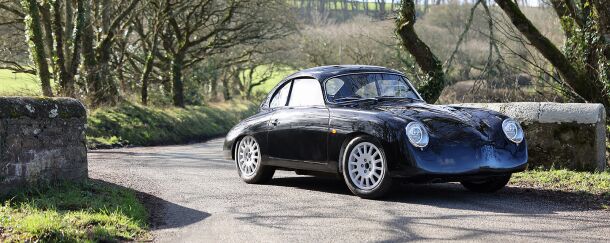
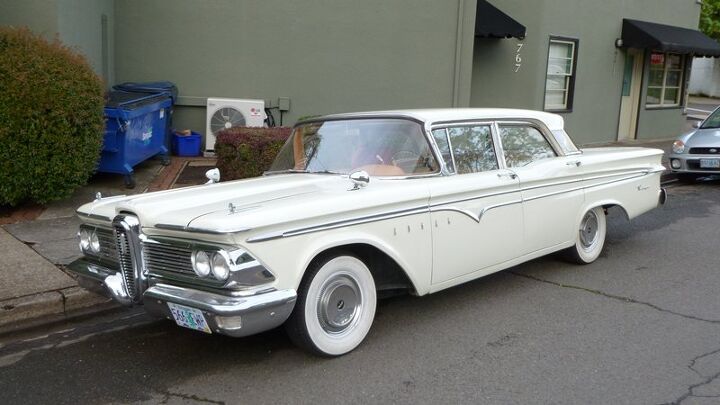
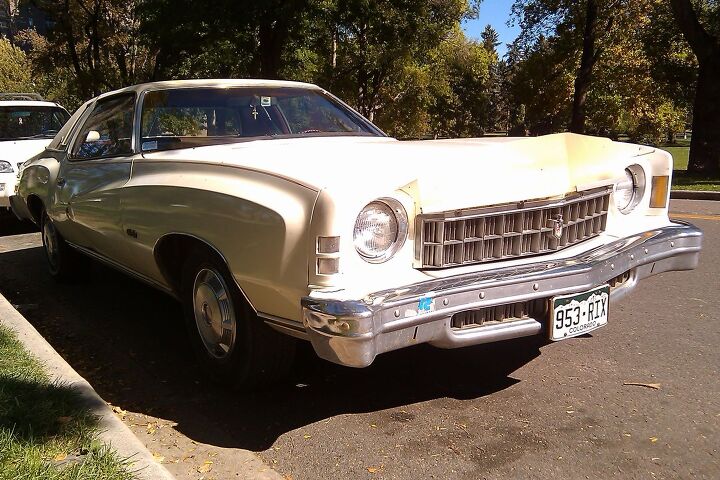

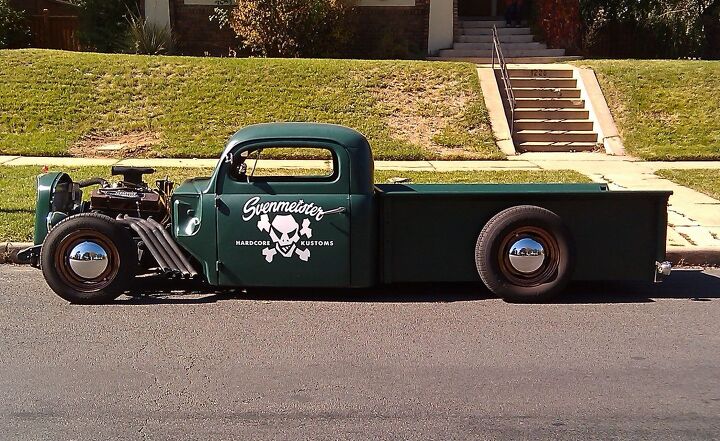
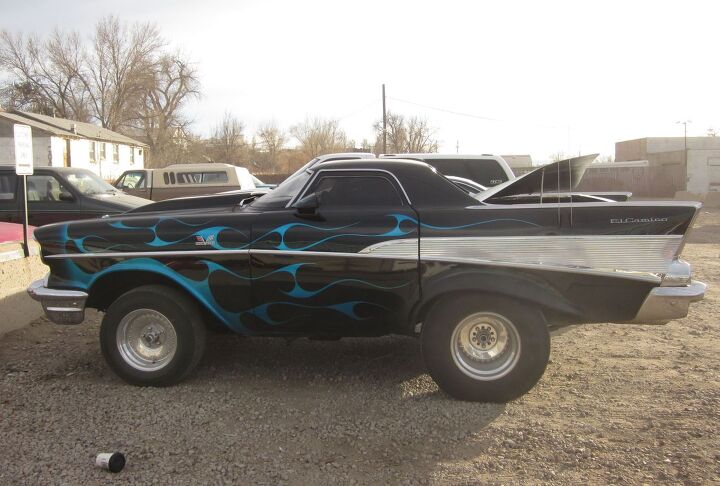





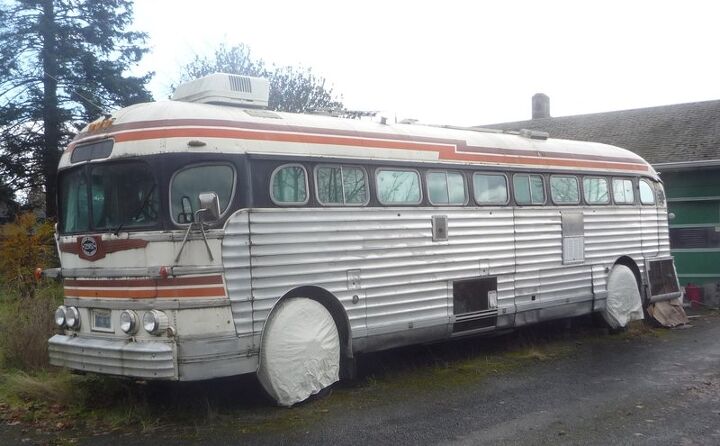


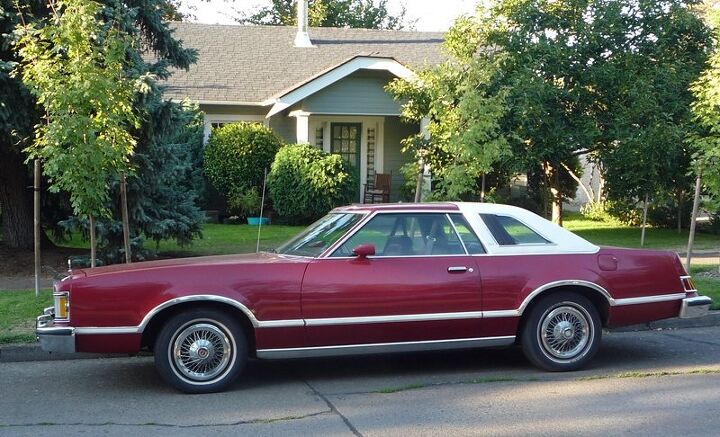

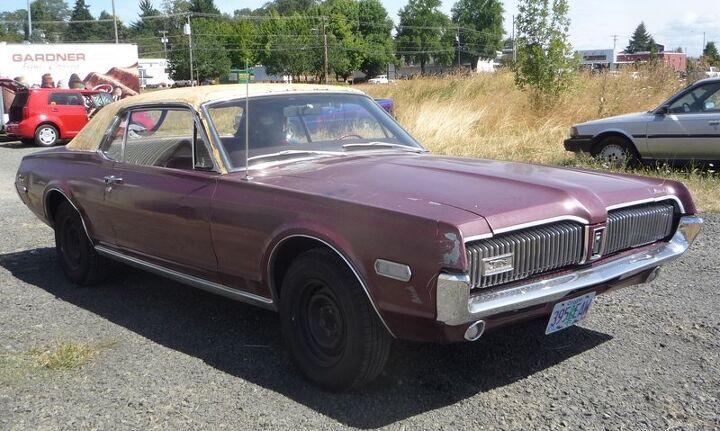
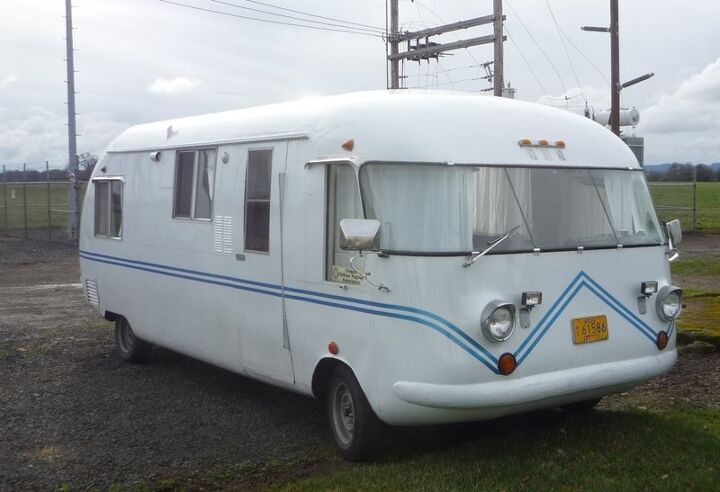
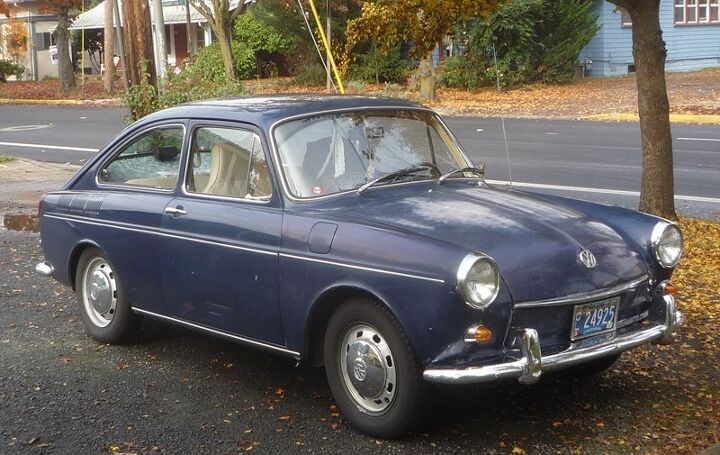
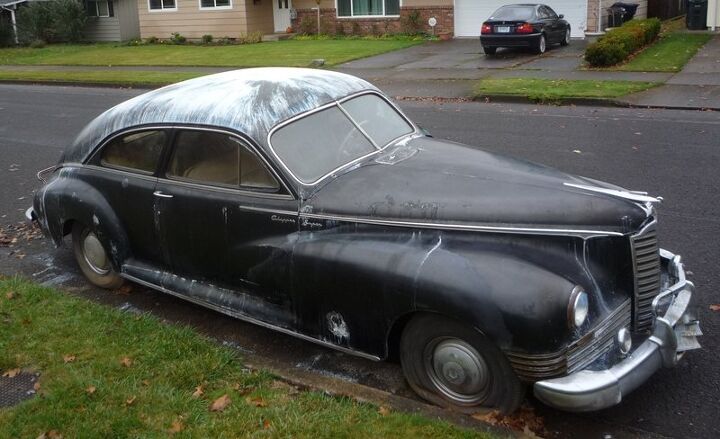

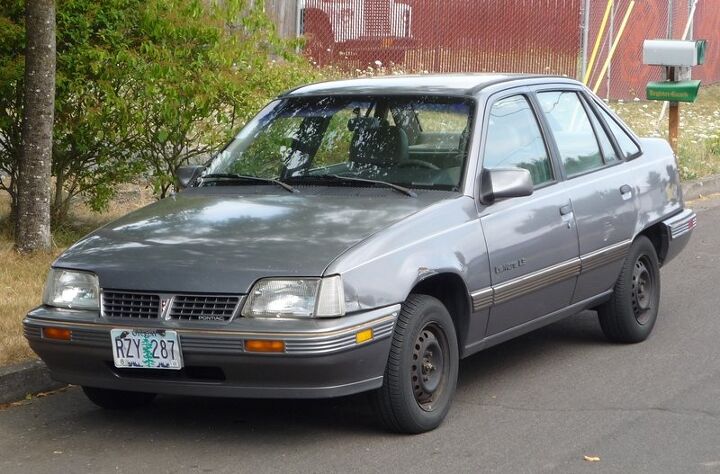


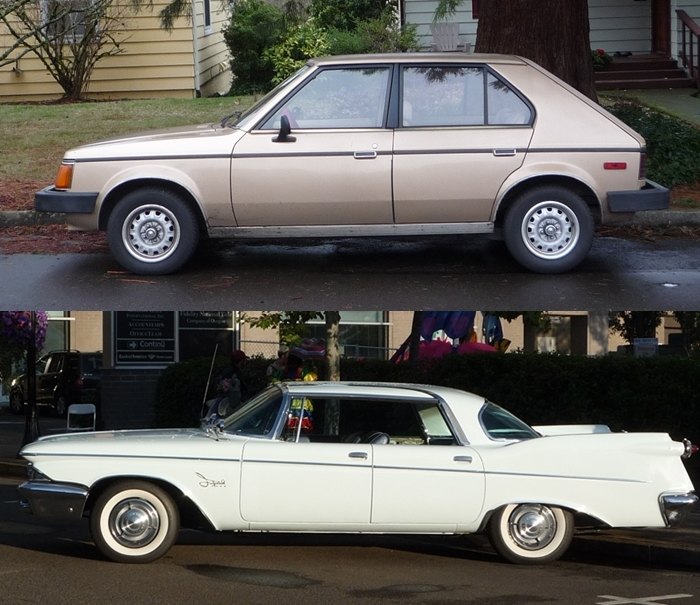


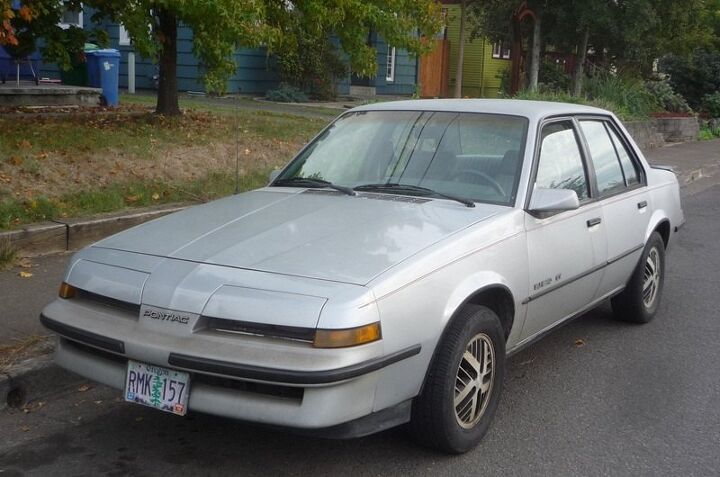
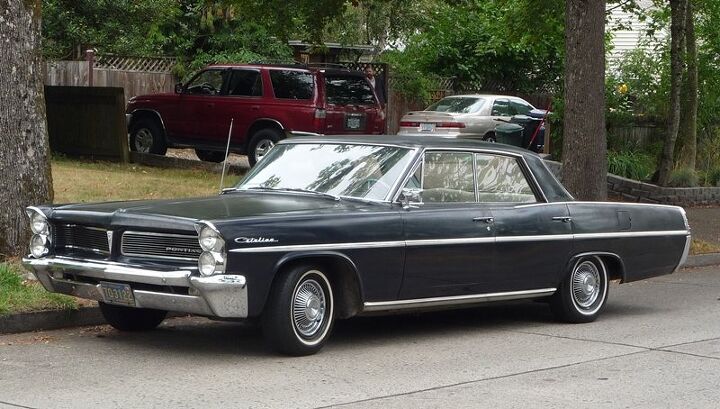
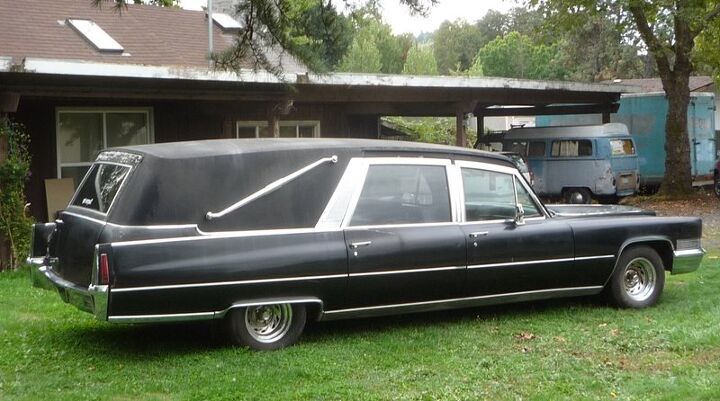
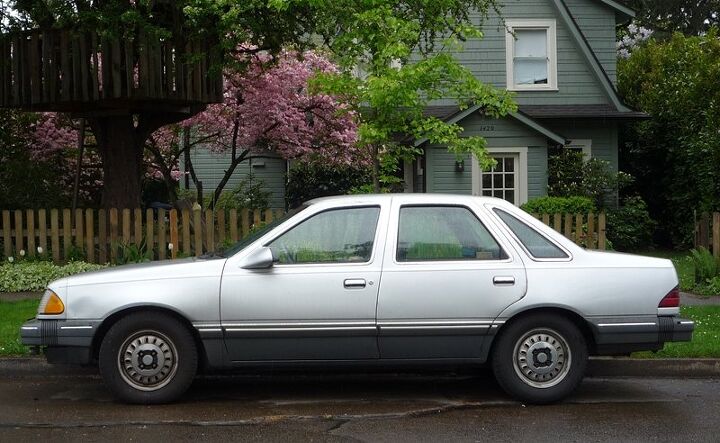
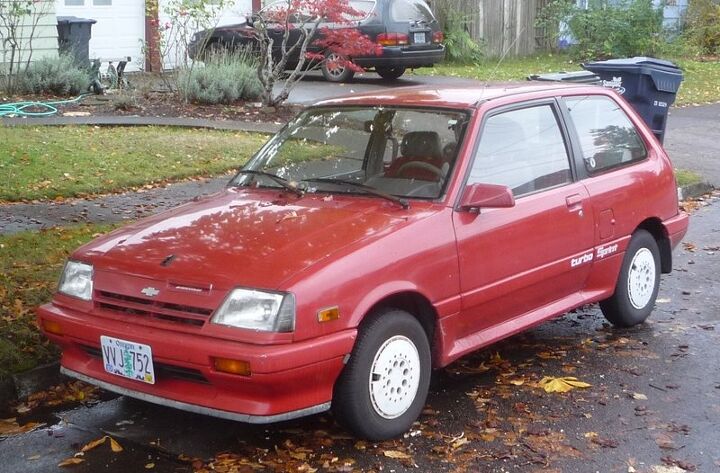
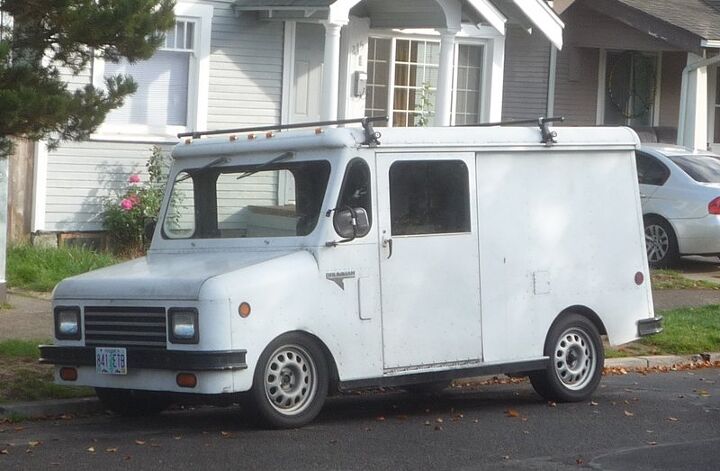
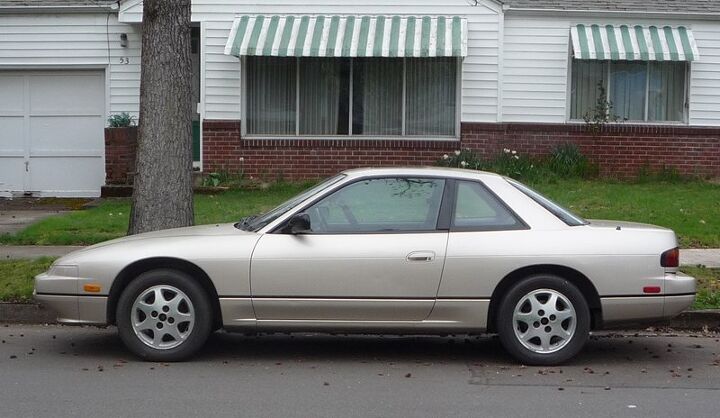


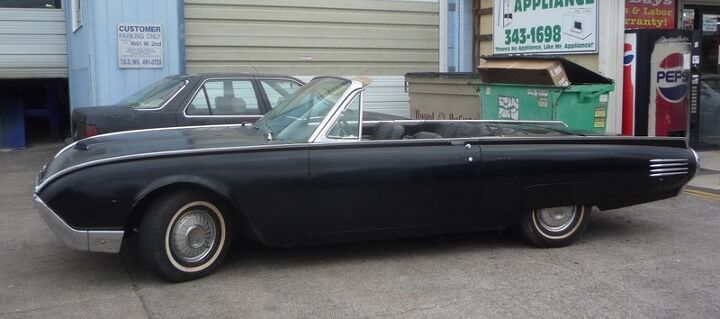
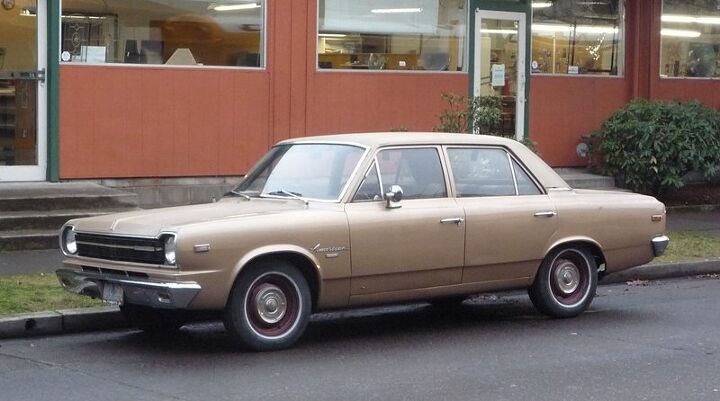

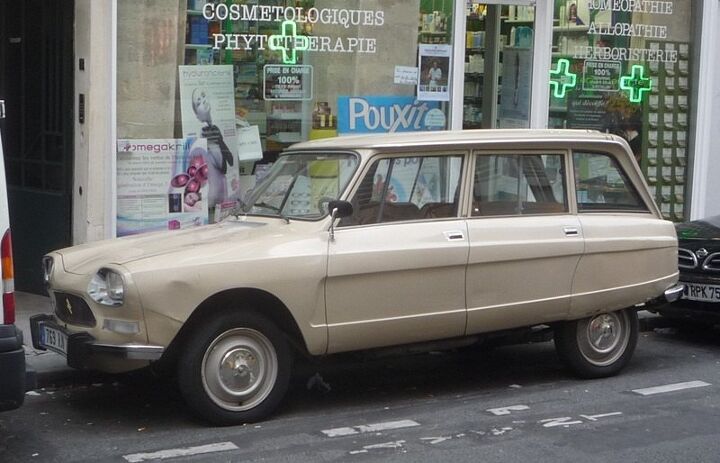
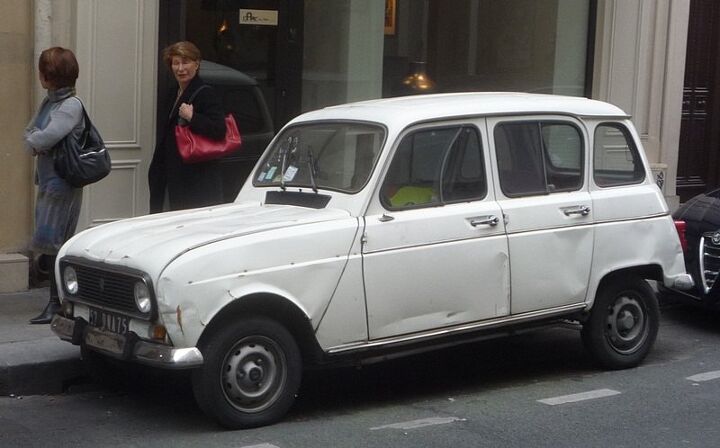
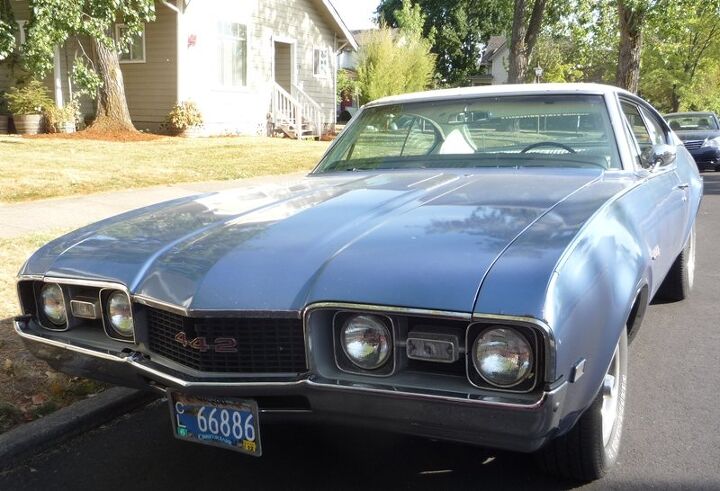


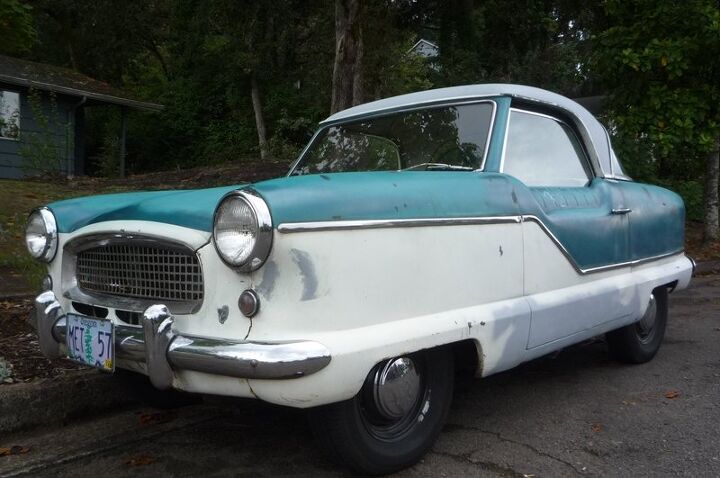


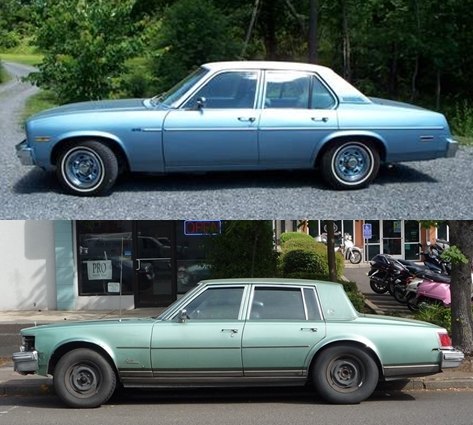

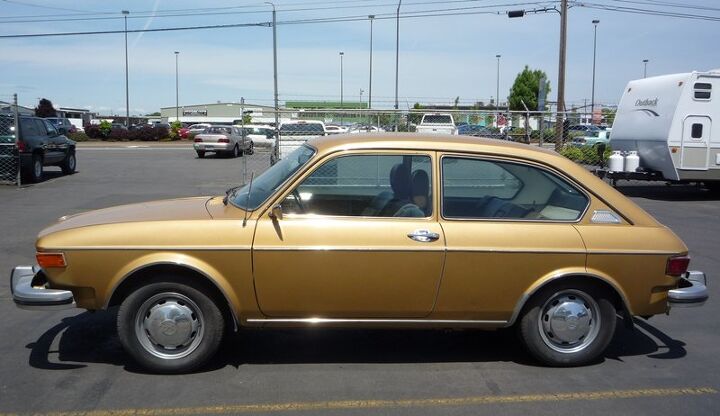

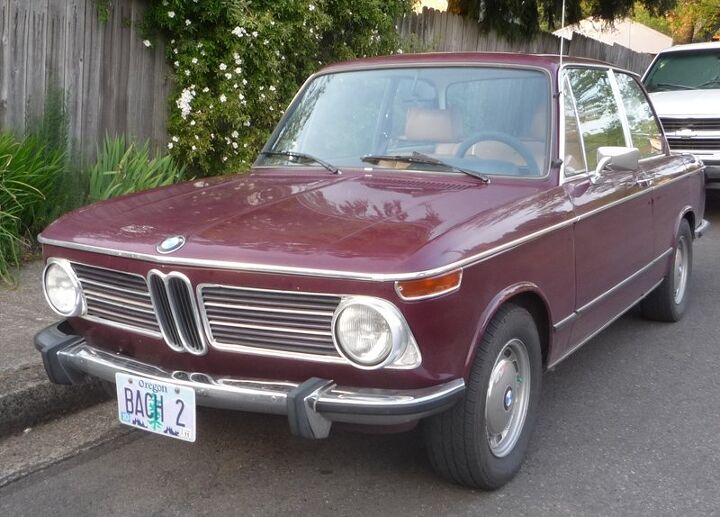
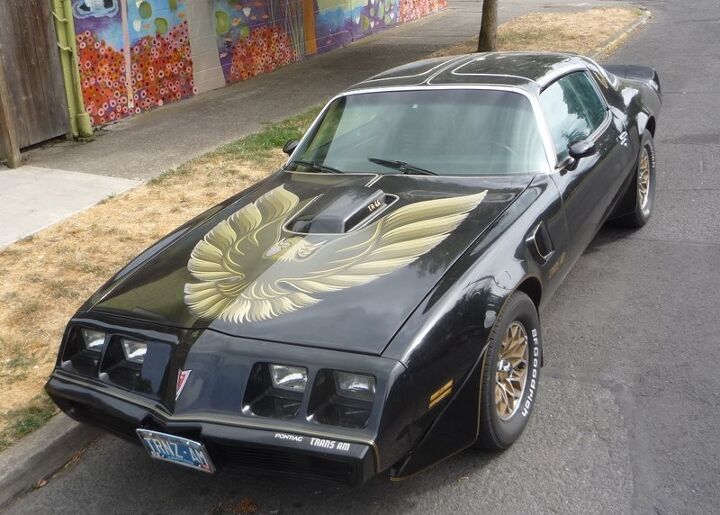
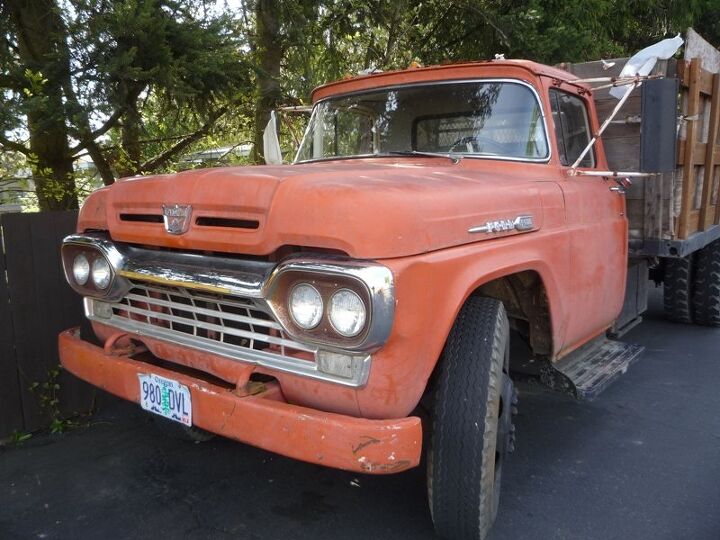
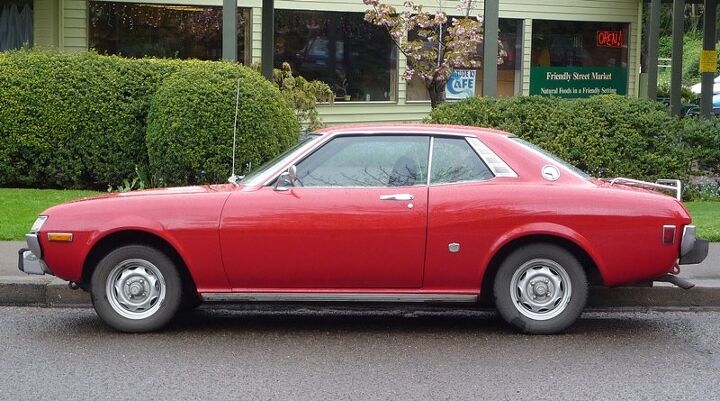
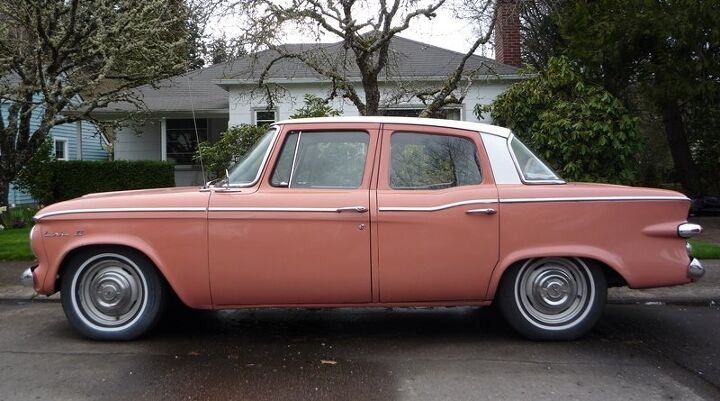

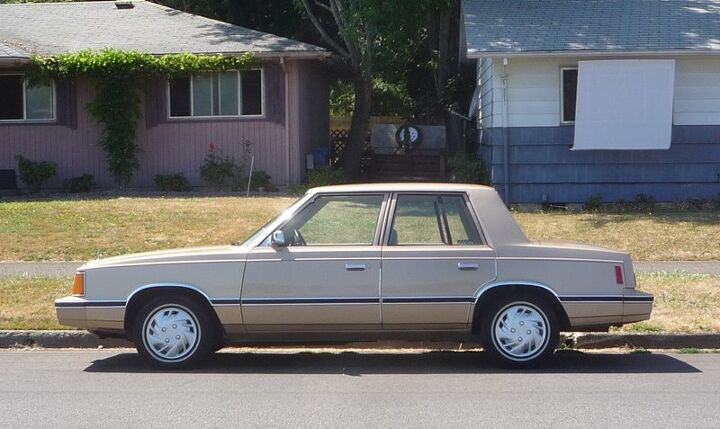

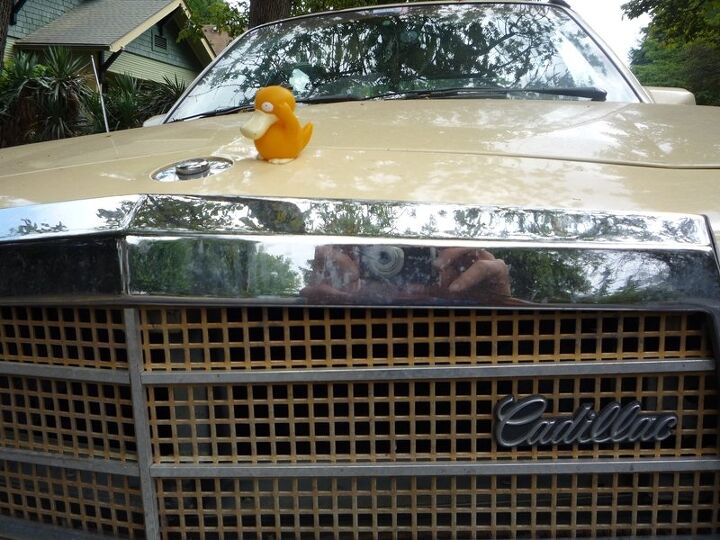












Recent Comments